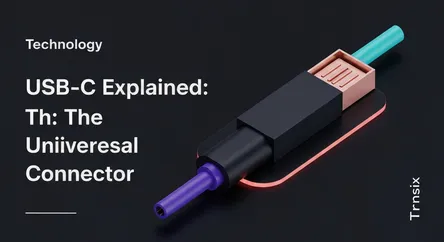Technology
USB-C Explained: The Universal Connector

Discover USB-C, the universal port for charging and data transfer. Learn why this reversible connector is now the standard for modern gadgets.
What is it?
USB-C, formally known as USB Type-C, is a 24-pin USB connector system distinguished by its small, oval, and reversible design. Unlike its predecessors, you can plug it in either way. It's designed to be a future-proof, all-in-one solution for data transfer, video output, and power delivery. This single port can replace a range of connectors, including older USB-A ports, HDMI, DisplayPort, and dedicated power adapters, making devices thinner and more versatile.
Why is it trending?
USB-C's popularity has surged due to its widespread adoption by major tech companies and regulatory bodies. The European Union has mandated it as the common charging standard for most electronic devices, forcing even historically proprietary companies like Apple to switch. This push for standardization, combined with its superior technical capabilities like faster data speeds (up to 40Gbps with Thunderbolt 4/USB4) and higher power delivery (up to 240W), has solidified its position as the industry-wide standard for everything from smartphones to high-performance laptops.
How does it affect people?
For consumers, USB-C simplifies daily life by creating a single-cable ecosystem. One cable and one power brick can charge your phone, laptop, tablet, and headphones, significantly reducing cable clutter and e-waste. This universal standard means you no longer need a bag full of different chargers when you travel. It also enables more powerful and streamlined workflows, allowing users to connect a laptop to a high-resolution monitor, an external hard drive, and a power source all through a single, convenient port.